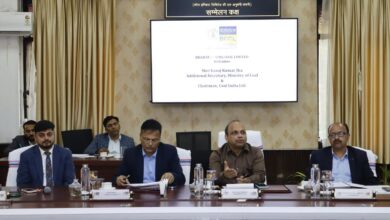Cyclones Tauktae And Yaas Ranked 4th And 5th Most Expensive Disasters In 2021
Worryingly, such climate devastation is set to continue without action to cut emissions

A new report by Christian Aid called “Counting the cost 2021: a year of climate breakdown” identifies 15 of the most destructive climate disasters of the year. The report shows the high cost of extreme weather events, both in terms of human lives and economic impacts. Cyclones Tauktae and Yaas which hit India are ranked as the 4th and 5th most expensive disasters in 2021, accounting for $1.5 billion and $3 billion respectively. Tauktae displaced more than 200,000 people with 198 reported deaths, while Yaas displaced 11,000 people with 19 reported deaths.
Key messages from the report include: Ten of the most expensive extreme weather events cost $1.5 billion or more. Hurricane Ida, which struck the US in August, tops the list, with an estimated cost of $65 billion. The July European floods racked up $43 billion in losses. Floods, cyclones and drought also killed and displaced millions across the globe in places which have done little to cause climate change.

These extreme events highlight the need for concrete climate action. The Paris Agreement set the goal of keeping temperature rise to below 1.5°C compared to pre-industrial levels, yet the outcomes from COP26 in Glasgow do not currently leave the world on track to meet this goal which is why much more urgent action is required.
It’s also vital that in 2022 more is done to provide financial support to the most vulnerable countries, in particular the creation of a fund to deal with the permanent loss and damage suffered in poor countries caused by climate change.
Most of these estimates are based only on insured losses, meaning the true financial costs are likely to be even higher. Among them is Hurricane Ida which struck the US in August costing $65 billion and killing 95 people. July floods in Europe cost $43 billion and killed 240 while floods in China’s Henan province caused $17.5 billion of destruction, killed 320 and displaced over a million.
Worryingly, such climate devastation is set to continue without action to cut emissions. Insurer Aon warns that 2021 is expected to be the sixth time global natural catastrophes have crossed the $100 billion insured loss threshold. All six have happened since 2011 and 2021 will be the fourth in five years.
While the report focuses on financial costs, which are usually higher in richer countries because they have higher property values and can afford insurance, some of the most devastating extreme weather events in 2021 hit poorer nations, which have contributed little to causing climate change. Yet in addition to the financial cost, these extreme weather events have caused severe human suffering from food insecurity, drought and extreme weather events causing mass displacements and loss of life. South Sudan has experienced terrible floods which has seen more than 850,000 people forced to flee their homes, many of whom were already internally displaced, while East Africa continues to be ravaged with drought, highlighting the injustice of the climate crisis.
Some of the disasters in 2021 hit rapidly, like Cyclone Yaas, which struck India and Bangladesh in May and caused losses valued at $3 billion in just a few days. Other events took months to unfold, like the Paraná river drought in Latin America, which has seen the river, a vital part of the region’s economy, at its lowest level in 77 years and impacted lives and livelihoods in Brazil, Argentina and Paraguay.
Four of the ten most costly events took place in Asia, with floods and typhoons costing a combined $24 billion. But the impact of extreme weather was felt all over the world. Australia suffered floods in March which displaced 18,000 people and saw damage worth $2.1 billion while floods in Canada’s British Columbia led to $7.5 billion in damage and 15,000 people having to flee their homes. Insurance and financial loss data on the recent tornadoes in the US is incomplete, so is not included in this report but may be included in next year’s study.
The writer of this article is Dr. Seema Javed, a known Environmentalist, Journalist and Communications Expert




